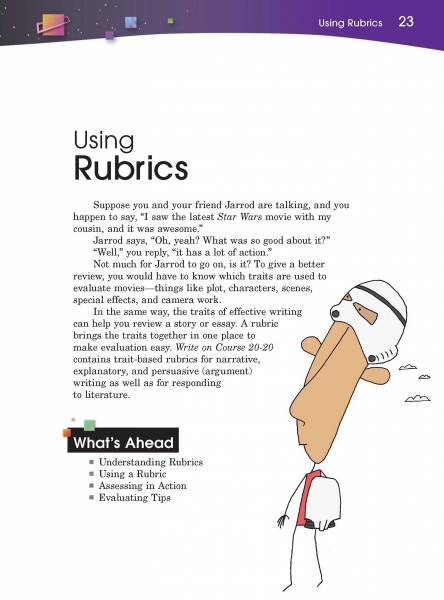Page 023 from

Start-Up Activity
Traits-based rubrics, such as the ones in Write on Course 20-20, provide you and your students with essential guides to identifying key features in narratives and other types of essays. At the beginning of each writing project, make sure that students review the appropriate rubric so they know what is expected of them.
Find out if students are familiar with rubrics and how they have used them. Then read and discuss the introduction. Point out that rubrics will help students do their best writing because rubrics let them know the key features in a particular type of writing. Ask students if they can provide a more specific evaluation of the latest Star Wars movie. (As an alternative, students can do a similar evaluation of a different movie or television show.)
Think About It
“Good writing is formed partly through plan and partly through accident.”
—Ken Macrorie

Start-Up Activity
Traits-based rubrics, such as the ones in Write on Course 20-20, provide you and your students with essential guides to identifying key features in narratives and other types of essays. At the beginning of each writing project, make sure that students review the appropriate rubric so they know what is expected of them.
Find out if students are familiar with rubrics and how they have used them. Then read and discuss the introduction. Point out that rubrics will help students do their best writing because rubrics let them know the key features in a particular type of writing. Ask students if they can provide a more specific evaluation of the latest Star Wars movie. (As an alternative, students can do a similar evaluation of a different movie or television show.)
Think About It
“Good writing is formed partly through plan and partly through accident.”
—Ken Macrorie